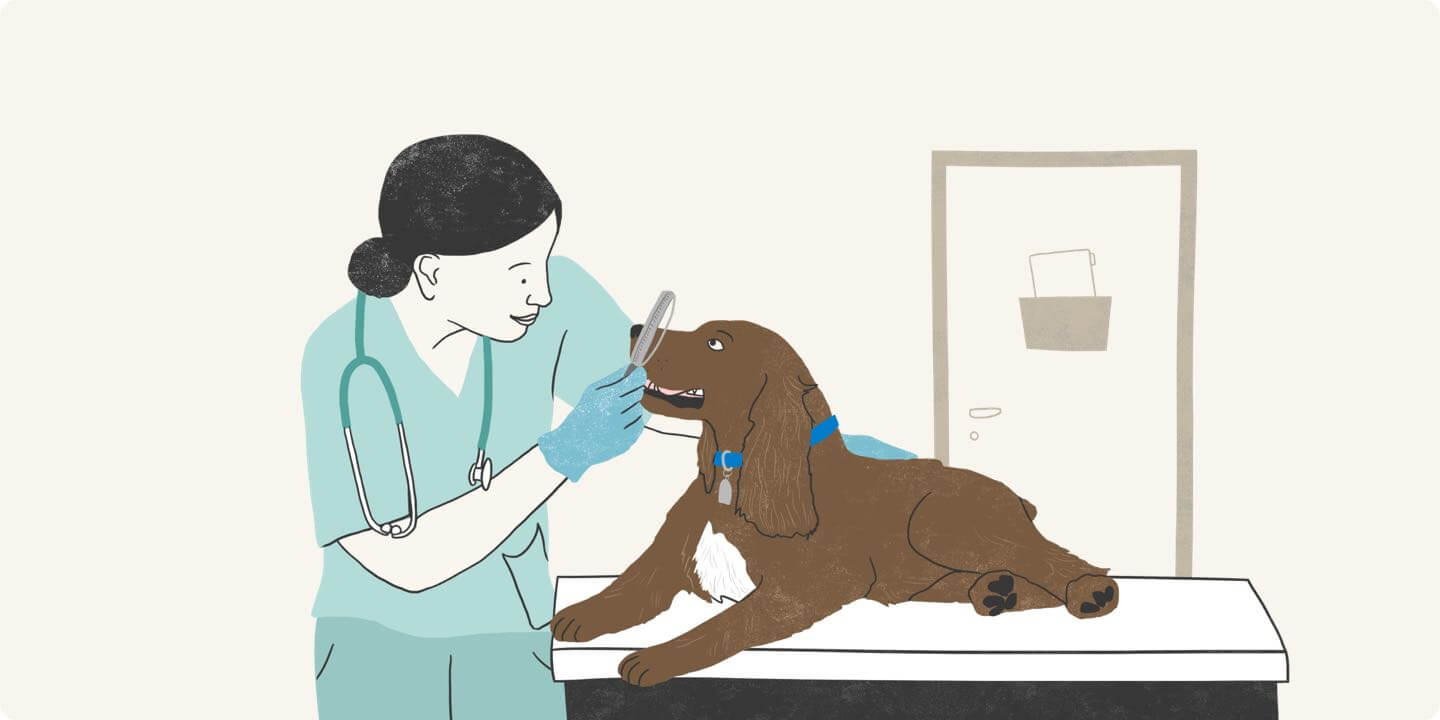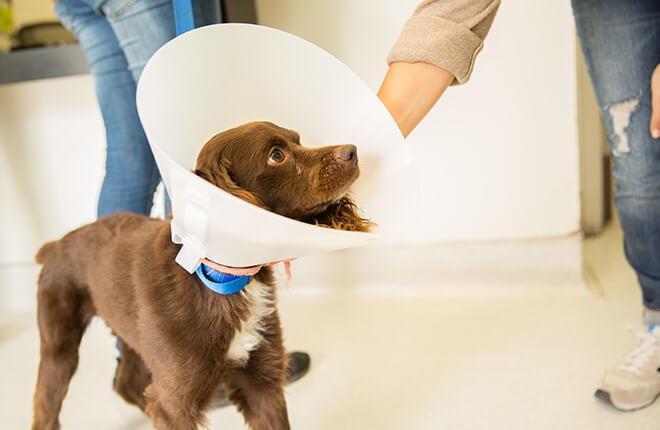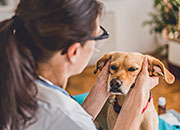Just like people, dogs can get eye infections and inflammation. Your dog’s eyes can become infected by bacteria or viruses, or inflamed by irritants. It’s important to first work with your veterinarian to determine the cause of your dog’s eye infection. Then they can determine if there might be another underlying condition that allowed your dog’s eyes to get infected in the first place.
Ensuring proper treatment and care for your dog’s eye infection – and any underlying conditions – is important for maintaining your dog’s comfort and their eye health.
Dog Eye Infection Symptoms
When you're able to recognize the signs of eye infections in dogs, you can get treatment sooner and help prevent the infection from worsening. Even if you notice only one sign of eye infection in dogs, don't hesitate to contact your veterinarian.
Redness
Your dog’s eyes may be pinker or redder than normal.
Discharge
You may notice increased discharge or “eye boogers” from one or both of your dog’s eyes. If the discharge is thicker than normal, colored (like white, yellow, or yellow green), or if there is significantly more discharge than normal (even if it’s clear), it’s a sign to have them evaluated by your veterinarian.
Pawing at Eyes
Eye infections are often itchy or painful, so you may notice your dog pawing at their eye(s) or even dragging their face across your floors or furniture. These actions can cause further damage to your dog’s eyes (like scratching the delicate surface of their cornea), so your veterinarian might prescribe a cone (Elizabethan collar) for your dog to wear while their eye infection is being treated.
Swelling of the Eyelid
Eye infections can cause puffiness of the tissue surrounding the eye, resulting in a swollen or droopy looking eyelid.
Squinting
Irritation or pain can cause squinting or increased blinking of the infected eye(s).
Dog eye infection symptoms can vary depending on what’s causing the infection, how long it’s been going on for, any additional conditions affecting the eye(s), and a host of other factors. You may see several of the signs listed above, or just one. The signs may get worse or even appear to resolve as the infection progresses, and you may see symptoms in one or both eyes.

Common Causes of Red Eye(s) in Dogs
Conjunctivitis, the inflammation of the conjunctival tissues that surround and cover many of the visible parts of the eyeball (as well as the undersides of the eyelids), is a common cause of a “red eye” appearance for dogs. There are many reasons dogs can develop conjunctivitis and red eyes, with infections being just one of the possibilities.
Allergies
Allergens, such as tree, grass, flower, and other pollens, can cause itchiness, redness, and discharge in dog eyes. Allergies are one of the most common causes of red eye in dogs.
Irritants
Objects like dust, sand, foxtails, and other foreign materials can irritate and cause inflammation and redness of the tissues around the eye.
Infection
Dog eyes can become infected with a host of different bacteria, viruses, fungus, and other microorganisms. Vaccinations and routine parasite preventative medications can help to decrease a dog’s risks.
Trauma
Any kind of trauma to the head or face (such as from rough play with another dog or a scratch to the eye from a cat’s claw) can result in a red eye.
Dry Eye
Some dogs have or develop a decreased ability to produce their natural tear film. Dogs with dry eye will often develop red eyes and are more likely to develop stubborn corneal ulcers and eye infections.
Cherry Eye
Cherry eye is a condition where the gland within the “third eyelid” in the inner corner becomes inflamed and sticks out onto the surface of the eye. Surgery is typically needed to correct and control the condition properly.
Is Dog Conjunctivitis Contagious?
Whether or not your dog’s conjunctivitis may be contagious to other dogs depends on what’s causing it. If their conjunctivitis is caused by allergies, irritants, dry eye, or most of the other common causes, it shouldn’t be contagious. Even bacterial eye infections in dogs aren’t typically thought to be contagious. However, certain viral infections that can cause conjunctivitis (including canine distemper and canine herpes) can be quite contagious to other dogs.
It’s always a good idea to wash your hands well after petting or treating your dog’s red eyes, before petting your other pets, and before touching your own eyes, nose, or mouth.
How to Treat Eye Infections in Dogs
Treatment for eye infections in dogs depends on the cause. It’s essential to visit your veterinarian to determine the cause and begin appropriate treatment. Your vet may prescribe eye drops and/or ointment to treat the infection, promote healing, ease any discomfort or itchiness, and possibly treat the underlying condition.
If an injury occurred to the eye, pain medication may be prescribed. If their eye infection is deeper within the eye, certain oral medications and/or injections may also be prescribed.
If your dog has an eye infection, you can do some things at home to improve their comfort level.
Keep the Eye Area Clean
If there is a buildup of discharge around your dog’s eyes, cleaning the area can help promote healing. Gently wipe the area with a clean, soft cloth moistened with just warm water. Do not use any peroxide, chemicals, or human makeup removal pads. Do not touch their eyeball.
If you’re not able to easily remove the discharge, or there is debris inside their eye, contact your veterinarian. There may be some complicating factors that need attention.
Use the Cone
Your veterinarian may prescribe a cone for your dog to wear during the treatment of their eye problems. A cone can help ensure that the treatment will have the best chance of working and that your dog won’t further damage their eye(s).
If your dog is having trouble adjusting to the cone, talk to your veterinarian about suggestions or other alternatives before discontinuing its use.
Can I Use Human Eye Drops for My Dog?
There are some types of human eye drops that may be safe to use with dogs, like artificial tear drops or ointment. However, always consult with your veterinarian before doing so. Using something on your dog’s eyes without the advice of your veterinarian could make your dog’s eye issues worse, prolong or worsen their pain, and even cause severe reactions.
ZPC-00790R2





